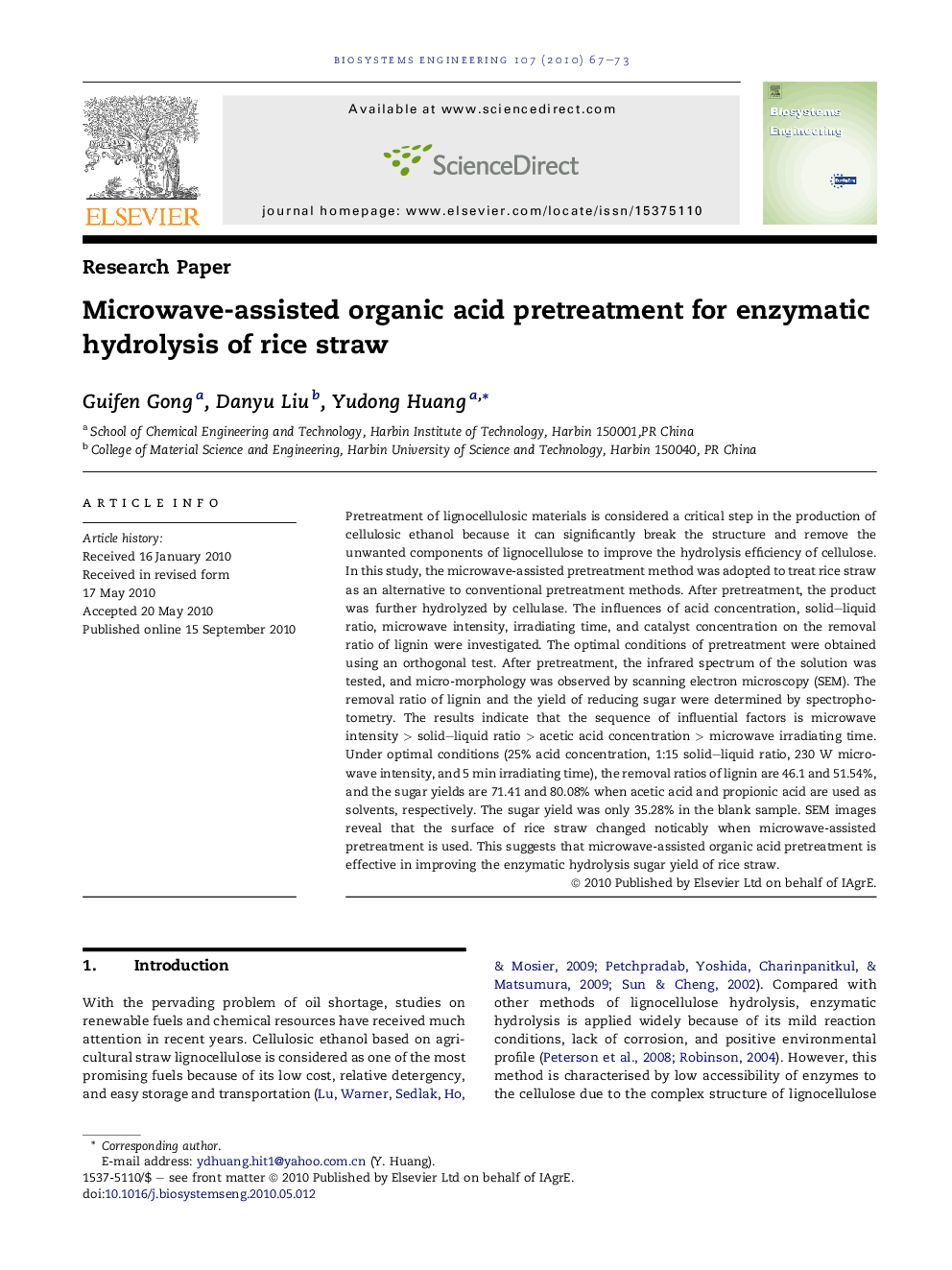| Article ID | Journal | Published Year | Pages | File Type |
|---|---|---|---|---|
| 1711877 | Biosystems Engineering | 2010 | 7 Pages |
Pretreatment of lignocellulosic materials is considered a critical step in the production of cellulosic ethanol because it can significantly break the structure and remove the unwanted components of lignocellulose to improve the hydrolysis efficiency of cellulose. In this study, the microwave-assisted pretreatment method was adopted to treat rice straw as an alternative to conventional pretreatment methods. After pretreatment, the product was further hydrolyzed by cellulase. The influences of acid concentration, solid–liquid ratio, microwave intensity, irradiating time, and catalyst concentration on the removal ratio of lignin were investigated. The optimal conditions of pretreatment were obtained using an orthogonal test. After pretreatment, the infrared spectrum of the solution was tested, and micro-morphology was observed by scanning electron microscopy (SEM). The removal ratio of lignin and the yield of reducing sugar were determined by spectrophotometry. The results indicate that the sequence of influential factors is microwave intensity > solid–liquid ratio > acetic acid concentration > microwave irradiating time. Under optimal conditions (25% acid concentration, 1:15 solid–liquid ratio, 230 W microwave intensity, and 5 min irradiating time), the removal ratios of lignin are 46.1 and 51.54%, and the sugar yields are 71.41 and 80.08% when acetic acid and propionic acid are used as solvents, respectively. The sugar yield was only 35.28% in the blank sample. SEM images reveal that the surface of rice straw changed noticably when microwave-assisted pretreatment is used. This suggests that microwave-assisted organic acid pretreatment is effective in improving the enzymatic hydrolysis sugar yield of rice straw.
